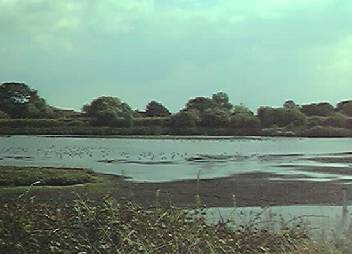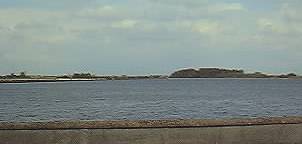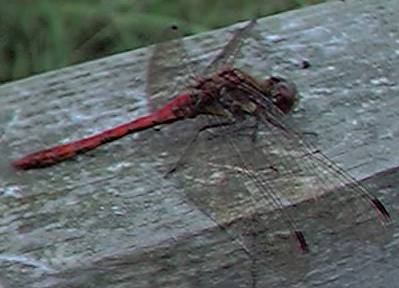
Back to the Index page
[Species lists below]
This was a joint outing with U3A, and a dozen people met up in Norton for the trip to Tophill Low, which is south of Driffield. Despite the petrol crisis we all made it to the reserve and back again. We were very lucky with the weather, which was warm and dry with some sunshine.

Tophill Low is a Yorkshire Water nature reserve with two large reservoirs and several shallow ponds and marshy areas together with some carr and hawthorn-dominated scrub woodland. The photo above shows the view from one of the hides overlooking a shallow-water pond, with many waders present. It is particularly good for birds, though there are interesting plants present as well; by September most of these had gone over, although we did see some bur marigolds growing around the edges of the shallow ponds, unfortunately too far away to examine closely or photograph. Bur marigolds (there are two similar species, both of which grow here) are uncommon plants, annuals growing in mud along the water’s edge as water levels fall in the early summer. We also found a plant we are not familiar with in Ryedale: the prickly ox-tongue Picris echioides which looks rather like a super-spiny sow thistle. I did not manage to take a picture, and it was well over its best, but it is always good to find a new plant. It was also interesting to see two very similar yellow dandelion-like flowers growing together so we could compare them: autumn hawkbit (Leontodon autumnalis) with reddish undersides to the petals, and lesser hawkbit (L. saxatilis) with greyish undersides and slightly different leaves.

We saw plenty of birds, mainly ducks and waders on the various water bodies such as the reservoir above. The star bird was probably the little egret stalking fish in shallow water – every time the bird took a step forward a few feet in front a shoal of little fish jumped clean out of the water. Only once or twice did I see the egret actually catch one of them! We also had a magnificent view of a juvenile grey heron, which at one point indulged in “dancing”. There were large numbers of great crested grebes on the reservoirs, certainly more than I had ever seen together before.

There were numerous dragonflies including a large blue-bodied species and common red Darters (right), and several species of butterflies including a pristine red admiral, common blues and two orange-yellow butterflies (?clouded yellow).
I do not have lists of all that was found, but we did record the following:
...and one small toad.Back to the Top
| Photos © Gill Smith 2000 | Back to the Top |
Back to the Index page
© Ryedale Natural History Society 2000
Page last modified 14th September 2000. Site maintained by APL-385